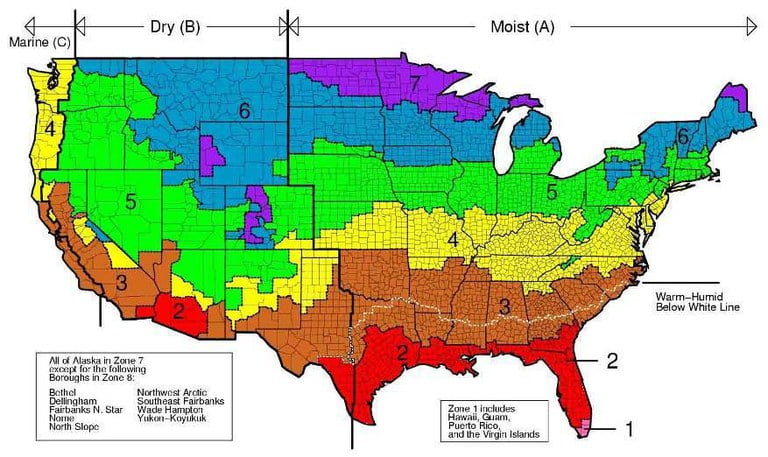There are many benefits to insulating your basement, including increased comfort and energy savings. There are a variety of insulation methods available, so you can choose the one that best suits your needs. Insulating your basement will make it more comfortable and reduce your energy bills.
In this article, I will show you the various ways of insulating a basement.
Should I insulate the basement walls?
As the [BusinessScience.com] report says:
Basement walls should be insulated with non-water sensitive insulation that prevents interior air from contacting cold basement surfaces—the concrete structural elements and the rim joist framing.
best insulation for basement walls
The three most common types of insulation for basements are spray foam insulation, fiberglass insulation, and foam board insulation. Each type of insulation has its own set of pros and cons, so it is important to choose the right type of insulation for your basement based on your needs and preferences.
Insulating basement walls with fiberglass
Fiberglass insulation is made from plastic reinforced with extremely fine glass fibers. As traditional insulation, fiberglass can be found in most older homes in the walls, attic, crawl space, and rim joist.
Fiberglass blanket insulation for basement walls Pros:
Fiberglass is inexpensive when compared to other basement insulation options.
Suppose you plan to tackle refinishing the basement right down to the insulation. In that case, fiberglass can be installed as a DIY project.
Fiberglass blanket insulation for basement walls Cons:
Fiberglass in the basement is prone to mold issues as it holds condensation.
Because fiberglass batts are air permeable, it doesn’t prevent warm, humid interior air from contacting the basement wood studs. This can lead to condensation and moisture issues.
If the fiberglass is disturbed, it can release particulates into the air, which can embed in the skin and can be inhaled.
How to Install Fiberglass Insulation in Walls and Ceiling
In this video, He showed you how to insulate a new construction space like an unfinished basement. He used the traditional fiberglass insulation and showed you how to cut around obstructions like electrical boxes and wire runs.
Spray foam insulation for basement walls
Spray foam insulation is one of the best ways to insulate your basement. It is easy to install and provides excellent protection against moisture and mold. Spray foam also creates an air seal that will keep your basement comfortable and draft-free.
The pros of using spray foam to insulate basement walls are that it is an effective way to seal the basement from outside air, moisture doesn’t promote mold growth, and it has sound-dampening properties. The cons are that it is more expensive than other insulation options and can be challenging to install correctly.
How to insulate the basement walls with Spray foam
I have selected for you the following video, which is very useful to avoid the classic mistakes that can be made when insulating with spray foam.
Here are some steps of the video:
Spray foam is the best option for insulation in a basement. It is a vapor barrier and prevents mold growth. It is recommended that residents in the home vacate for a full 24 hours after application.
In order to prevent mold growth in basements, it is important to use proper insulation and vapor barriers. Closed cell spray foam is the best option for preventing mold, as it is impervious to water and air movement. However, it is important to note that spray foam is a job that is best left for professionals.
Choose the thickness of your foam insulation.
Depending on the area where you live and the degree of humidity in your basement, you will have to choose a different level of thickness for your foam.
The university of North Dakota has a helpful guide that can help you choose the right foam thickness.

Foam Board Insulation for basement walls
Foam board insulation is a great option for insulating basement walls. It is relatively inexpensive and easy to install, and it is also low-maintenance and moisture-resistant. Foam board insulation is also a good choice for basement walls because it is a good option for creating an air barrier.
One of the main pros of foam board insulation is that it does not require replacement or maintenance. Foam board insulation can also support an interior air barrier and resist water flow and moisture build-up. However, one of the main cons of foam board insulation is that it can allow air leakage if the boards are not correctly installed. Additionally, foam board insulation does not prevent airflow if the boards and sheets are not correctly installed.
How to insulate the basement walls with foam boards
In the following video, you can see instructions on how to install foam boards in your basement. This is a short excerpt:
The best way to insulate a basement is to use closed-cell spray foam or rigid foam board. A rigid foam board is cheaper and more popular for DIY projects. To prevent mold growth, it is important to use a vapor barrier.
Conclusions on basement insulation.
Some use foam or fiberglass to insulate the basement just because they want to finish the basement, or others do it because they do not like moisture to rise from the concrete base. If you use one of the solutions proposed here effectively, you will get excellent results.



